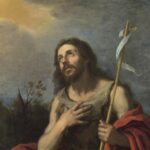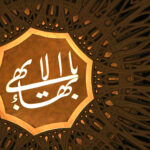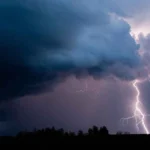
Welcome to the world of the Druze faith, a unique and vibrant religious tradition with roots dating back centuries. Founded in the 11th century by Muhammad ibn Ismail ad-Din in Egypt, the Druze religion has evolved into a rich tapestry of beliefs, practices, and cultural heritage. With an estimated 800,000 to 1 million followers worldwide, the Druze community embodies a commitment to secrecy, spiritual exploration, and ethical living. Join us as we explore the history, beliefs, and contemporary challenges facing the Druze faith, celebrating its resilience and contributions to the tapestry of global religions.
Social Hierarchy: Historically, Druze society has been characterized by a social hierarchy that distinguishes between spiritual leaders, known as uqala, and lay members, referred to as juhhal. The uqala hold religious authority and are responsible for guiding the community in matters of faith and practice, while the juhhal comprise the general populace. While this distinction was more rigid in the past, modern Druze communities have seen a relaxation of these social boundaries, with increased opportunities for social mobility and participation in religious affairs.
Blending of Philosophies: Druze beliefs reflect a unique synthesis of various philosophical and religious traditions, including Ismaili Islam, Gnosticism, Neoplatonism, and Hinduism. This eclectic blending of ideas and concepts has contributed to the richness and complexity of Druze theology, offering adherents a diverse tapestry of spiritual insights and practices. The integration of these diverse influences underscores the inclusive and pluralistic nature of Druze religious thought, fostering a sense of openness and receptivity to different sources of wisdom.
No Clergy: Unlike many other religious traditions, the Druze religion does not have a formal clergy. Instead, religious duties are carried out by respected lay leaders known as sheikhs, who possess knowledge of religious texts and rituals. These sheikhs play a crucial role in the spiritual life of the community, providing guidance, instruction, and support to fellow adherents. The absence of a formal clergy reflects the egalitarian ethos of the Druze faith, emphasizing the shared responsibility of all members in upholding religious teachings and principles.
Salutations: A common greeting among Druze is “al-waba al-diwan,” which translates to “peace upon the house.” This traditional salutation reflects the Druze emphasis on peace and harmony in interpersonal relationships and interactions with others. By invoking blessings of peace upon one another’s homes, Druze reinforce the importance of mutual respect, goodwill, and hospitality within their community and beyond.
Dietary Restrictions: Druze adhere to certain dietary restrictions, abstaining from the consumption of certain foods deemed impure or prohibited according to religious guidelines. These restrictions may include avoiding shellfish and animals that have been strangled, among other dietary prohibitions. Such dietary practices serve to reinforce the spiritual purity and integrity of adherents, reflecting a commitment to ethical living and adherence to religious principles.
Holy Sites: Unlike some other religious traditions, the Druze do not have a centralized holy site that serves as the focal point of pilgrimage and worship. Instead, important pilgrimage locations include sites associated with key figures and events in Druze history and theology. Examples include Hallaq in Syria, believed to be the burial place of one of the Seven Initiates, and Ma’arrat al-Nu’man, where the legendary figure al-Hakim disappeared. These sites hold significance as places of spiritual pilgrimage and contemplation for Druze adherents seeking to deepen their connection to their faith.
Language: While traditional Druze religious texts and rituals are conducted in Arabic, modern Druze communities may use local languages such as Hebrew or English in their religious practices and everyday interactions. This linguistic diversity reflects the global spread of the Druze diaspora and the adaptation of religious traditions to different cultural contexts. Regardless of the language spoken, the underlying principles and teachings of the Druze faith remain central to community life and religious observance.
Art and Music: Druze religious art is characterized by its symbolic and non-representational nature, often featuring intricate geometric patterns and calligraphy. These artistic expressions serve to convey spiritual truths and principles, evoking a sense of awe, wonder, and reverence in adherents. Similarly, religious music plays a significant role in Druze rituals and ceremonies, serving to uplift and inspire participants and create a sacred atmosphere conducive to spiritual reflection and communion.
Historic Persecution: Throughout their history, the Druze have faced periods of persecution and discrimination, particularly during times of political instability and religious conflict. This persecution has manifested in various forms, including social marginalization, economic exploitation, and violent reprisals. Despite these challenges, the Druze have demonstrated resilience and fortitude, preserving their religious identity and cultural heritage in the face of adversity.
Outreach Efforts: In recent decades, there has been a concerted effort within the Druze community to increase outreach and education about the Druze faith to the wider world. This outreach may take the form of educational programs, interfaith dialogue initiatives, and community engagement activities aimed at promoting greater understanding and appreciation of Druze beliefs and practices. By fostering dialogue and collaboration with individuals and organizations outside the community, Druze seek to build bridges of understanding and mutual respect across religious and cultural divides.
Modern Challenges: Modern Druze communities face a myriad of challenges, including the pressures of assimilation and the preservation of their unique religious identity in an increasingly globalized world. As Druze individuals and families interact with diverse cultures and societies, they must navigate the tension between embracing modernity and maintaining traditional values and practices. This tension can manifest in various areas of life, including language, dress, education, and social customs, as Druze seek to balance their religious commitments with the demands of contemporary life.
Environmentalism: There is a growing emphasis within Druze communities on environmental stewardship and sustainability, reflecting a deep reverence for the natural world and a commitment to responsible stewardship of God’s creation. Druze teachings emphasize the interconnectedness of all living beings and the importance of preserving ecological balance and harmony. As such, many Druze individuals and organizations are actively involved in environmental advocacy, conservation efforts, and eco-friendly initiatives aimed at protecting the planet for future generations.
Social Activism: Many Druze are engaged in social justice movements and interfaith dialogue, advocating for equality, human rights, and peace. Inspired by their religious teachings, which emphasize compassion, justice, and solidarity with the marginalized, Druze activists work tirelessly to address issues such as poverty, discrimination, and conflict. Through their activism, they seek to embody the values of their faith and contribute to positive social change in their communities and beyond.
Interfaith Relations: The Druze generally maintain positive relations with other Abrahamic religions, fostering dialogue, cooperation, and mutual respect. Grounded in a shared belief in the unity of God and the importance of ethical living, Druze communities often collaborate with individuals and organizations from diverse religious backgrounds on interfaith initiatives, humanitarian projects, and peace-building efforts. By cultivating relationships of trust and understanding, Druze contribute to the promotion of religious tolerance and harmony in multicultural societies.
Future of the Religion: The future of the Druze faith is shaped by a complex interplay of internal dynamics and external influences, including demographic shifts, socio-economic changes, and geopolitical developments. As Druze communities adapt to the challenges and opportunities of the modern world, they must grapple with questions of identity, continuity, and relevance. Despite these challenges, the enduring resilience and spiritual vitality of the Druze tradition offer hope for the continued flourishing of the faith and its contributions to the diversity of human religious experience.
5 FAQs About the Druze Religion:
What are the core beliefs of the Druze religion?
The Druze faith is a complex and secretive religion, but some core beliefs include:
Monotheism: Belief in one all-encompassing God, often referred to as al-Hakim.
Reincarnation: The soul progresses through seven cycles of reincarnation until reaching perfection.
Five Pillars: Truthfulness, self-restraint, compassion, resignation to God’s will, and intellectualism.
Peace Emphasis: The Druze religion strongly emphasizes peace and forbids violence except in self-defense.
Universal Wisdom: Druze believe all religions contain elements of universal divine wisdom.
Why is the Druze religion considered secretive?
The Druze faith is known for its secrecy.
There are a few reasons for this:
Initiation System: Religious knowledge is revealed gradually through an initiation system. Only initiated members (uqala) have access to the highest levels of understanding.
Oral Tradition: Religious texts are not publicly available and are passed down orally through generations.
Historical Persecution: Facing persecution throughout history, the Druze may have developed secrecy as a way to protect their beliefs.
What are some unique aspects of Druze practices?
Here are some distinctive practices in the Druze religion:
Social Hierarchy: Traditionally, Druze society had a social hierarchy with spiritual leaders (uqala) and lay members (juhhal). This distinction is less rigid in modern times.
Dietary Restrictions: The Druze have some dietary restrictions, avoiding certain foods like shellfish and strangled animals.
Salutations: A common Druze greeting is “al-waba al-diwan,” meaning “peace upon the house.”
No Central Clergy: There is no formal clergy in the Druze religion. Religious duties are carried out by respected lay leaders called sheikhs.
Where are the Druze people concentrated geographically?
The Druze faith is geographically concentrated in the Middle East, particularly in Syria, Lebanon, Israel, and Jordan. Estimates suggest there are between 800,000 and 1 million followers worldwide.
What are the challenges and opportunities facing the Druze religion today?
The Druze faith faces some challenges in the modern world, such as:
Assimilation: Integration into surrounding societies can lead to a weakening of unique religious identity.
Secrecy: Maintaining secrecy can hinder understanding and outreach to the wider world.
However, there are also opportunities:
Interfaith Dialogue: Increasing dialogue with other religions can promote tolerance and understanding.
Modernization: Adapting traditions to contemporary life can ensure the religion’s relevance for future generations.
Outreach: Efforts to educate the public about the Druze faith can combat misconceptions and foster greater acceptance.









